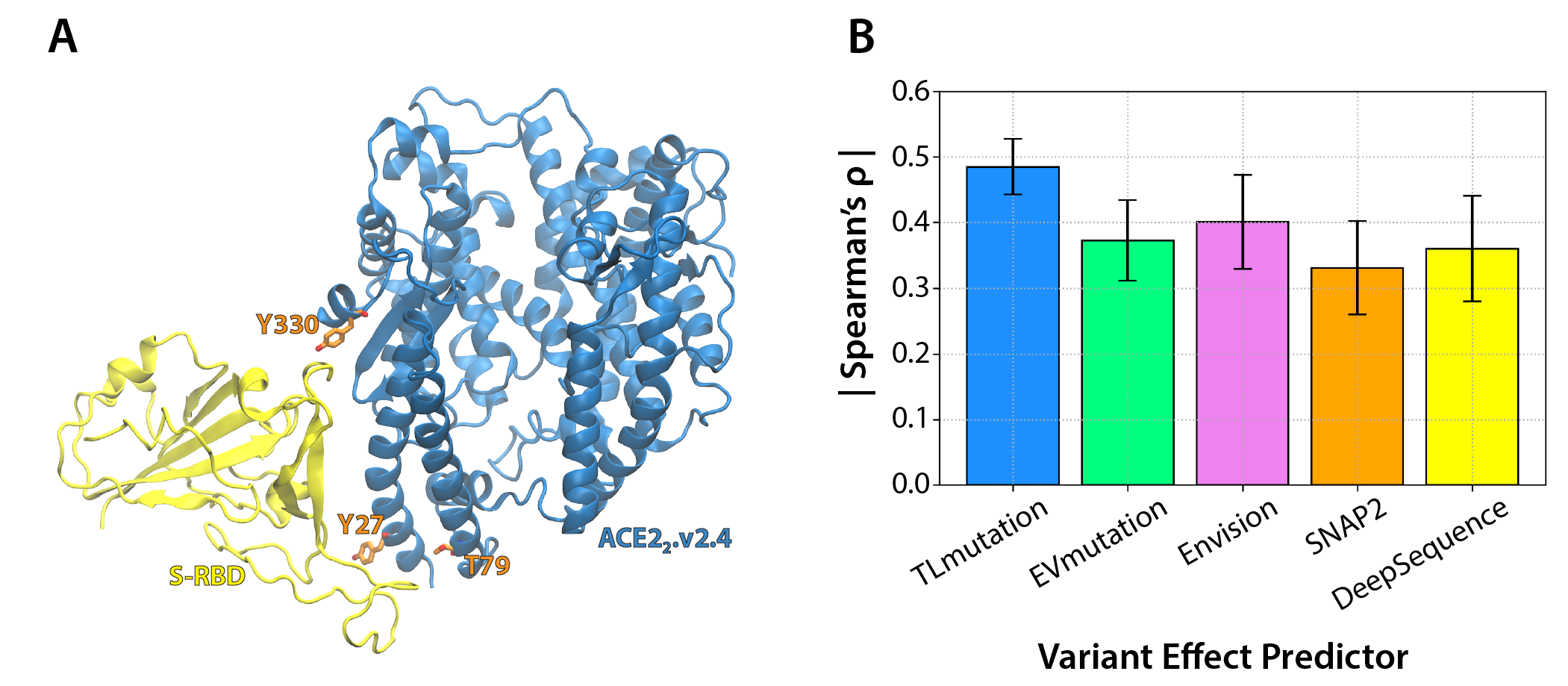Machine Learning Guided Design of High Affinity ACE2 Decoys for SARS-CoV-2 Neutralization
M. C. Chan, K. K. Chan, E. Procko, D. Shukla, "Machine Learning Guided Design of High Affinity ACE2 Decoys for SARS-CoV-2 Neutralization", The Journal of Physical Chemistry B, 127(9), 1995-2001. DOI

Abstract
A potential therapeutic candidate for neutralizing SARS-CoV-2 infection is engineering high-affinity soluble ACE2 decoy proteins to compete for binding of the viral spike (S) protein. Previously, a deep mutational scan of ACE2 was performed and has led to the identification of a triple mutant ACE2 variant, named ACE22.v.2.4, that exhibits nanomolar affinity binding to the RBD domain of S. Using a recently developed transfer learning algorithm, TLmutation, we sought to identified other ACE2 variants, namely double mutants, that may exhibit similar binding affinity with decreased mutational load. Upon training a TLmutation model on the effects of single mutations, we identified several ACE2 double mutants that bind to RBD with tighter affinity as compared to the wild type, most notably, L79V;N90D that binds RBD with similar affinity to ACE22.v.2.4. The successful experimental validation of the double mutants demonstrated the use transfer and supervised learning approaches for engineering protein-protein interactions and identifying high affinity ACE2 peptides for targeting SARS-CoV-2.